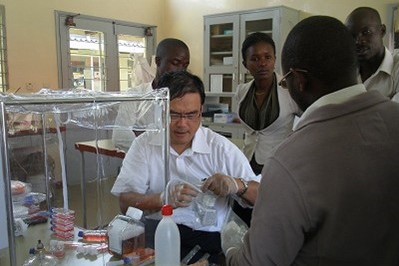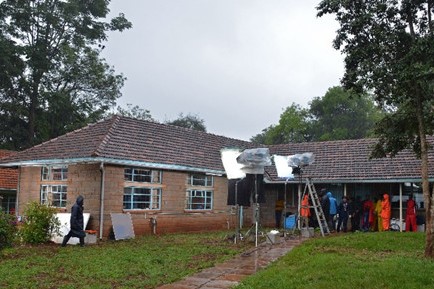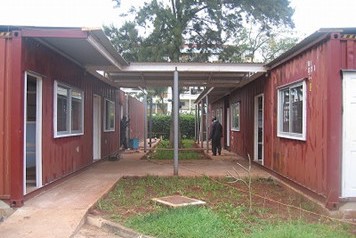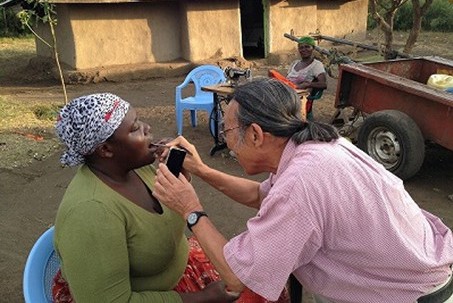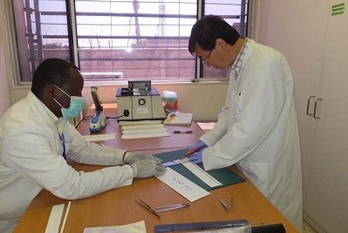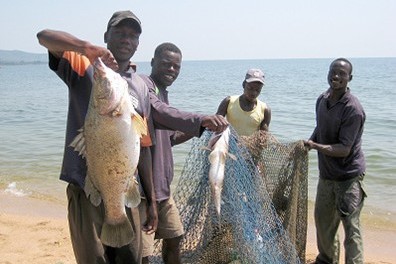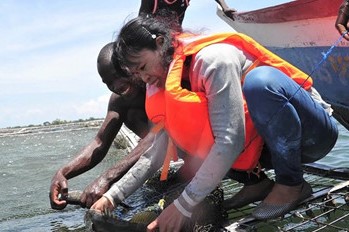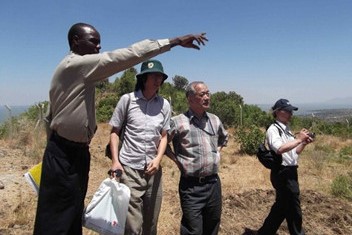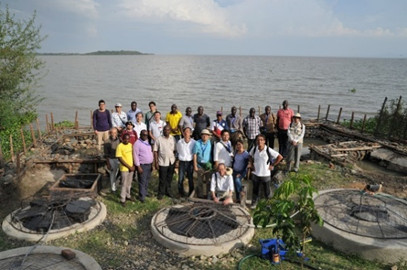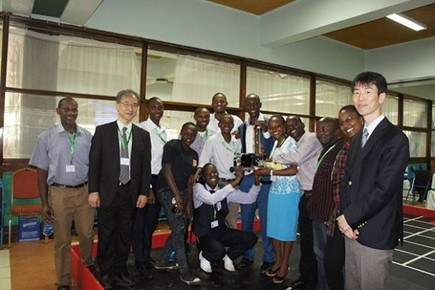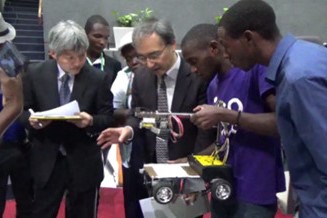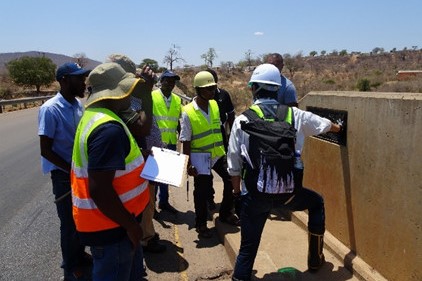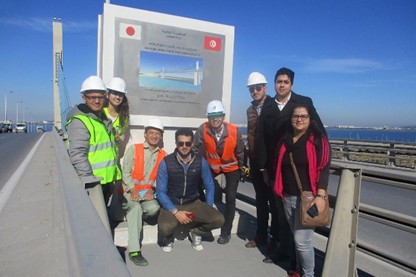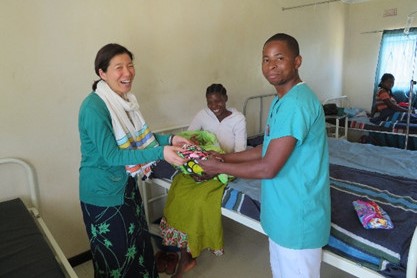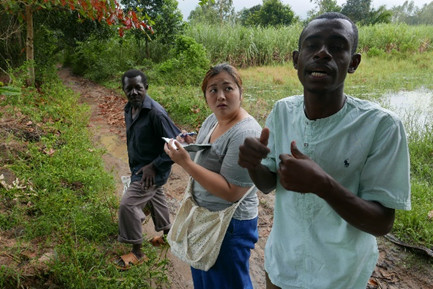
Cooperation with Africa
Contributing to Medical Care in Africa for More than a Half Century: Nagasaki University’s Initiatives
Nagasaki University dispatched its first faculty member to Africa in 1964 and has been continuously involved in medical care in Africa for more than half a century since then. Currently, we have a Research Station in Kenya in central Africa, where our university faculty members are stationed, and we have been conducting a wide range of medical care-related projects and human resource development projects in Africa, as well as projects to support Africa in the fields of engineering and fisheries.
The Origins of On-site Research in Africa (1964-)
Kaoru Hayashi, a member of the Research Institute of Endemics, which is now called the Institute of Tropical Medicine, was the first person from Nagasaki University to travel to Africa.
Dr. Hayashi, who later became a professor at the Institute of Tropical Medicine, visited Tanzania in 1964 as a member of Kyoto University’s Scientific Research on African Apes project for which he conducted a survey of viral diseases.
The following year, in 1965, Associate Professor Daisuke Katamine and three other researchers conducted a four-month survey of malaria and filariasis in Tanzania.
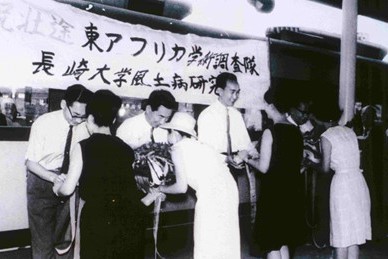


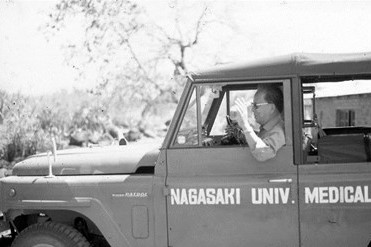
The Lion Standing in the Wind: Full-scale Medical Technical Cooperation in Kenya (1966-)
Nagasaki University’s field research in Africa which began in 1964, led to the adoption of a grant-in-aid for scientific research in 1966, and seven researchers specializing in viruses, bacteria, and parasites spent nine months in Africa.
The Japan International Cooperation Agency (JICA), which learned of these research activities, requested medical cooperation at the Rift Valley State Hospital in Kenya, and Nagasaki University responded by dispatching a total of 38 doctors, nurses, and laboratory technicians to Kenya over the next 10 years to provide medical care to the local people.
These activities were covered by the Nagasaki Broadcasting Corporation (NBC) and were made into a documentary program called “Daktari Japani” (Japanese Doctor), which was broadcast in 1972.
Furthermore, the story of Dr. Koichiro Shibata, who participated in the project, was the subject of a famous song by Masashi Sada and a novel, “The Lion Standing in the Wind,” which was made into a movie starring Takao Osawa in 2015.

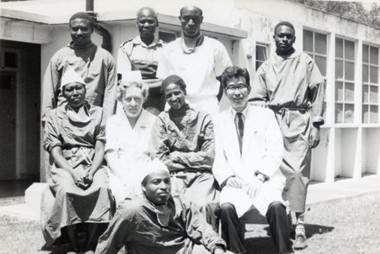
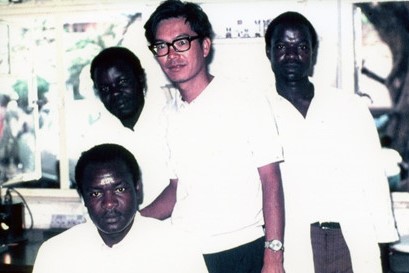
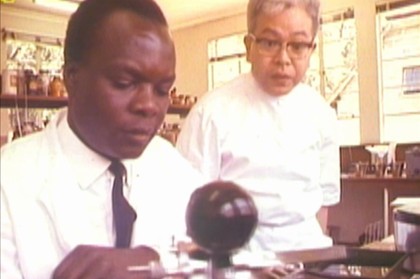

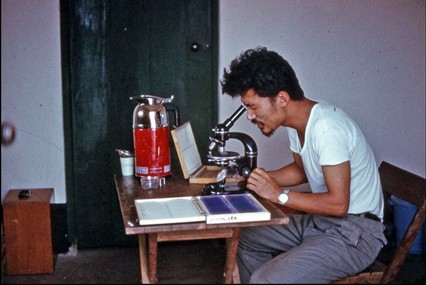
Kenya Medical Research Institute (KEMRI) Technical Cooperation Project and Infectious Disease Research (1979-)
Nagasaki University’s medical cooperation in Africa in collaboration with JICA has since shifted to cooperation with the Kenya Medical Research Institute (KEMRI), which was established to take responsibility for medical care in Kenya.
Since 1979, cooperation with KEMRI has been a Japan-wide effort. For more than 20 years, Nagasaki University dispatched many experts in the fields of viruses, bacteria, parasites, and hepatitis to KEMRI, and our researchers have played a central role in strengthening the research and education functions of KEMRI and promoting countermeasures against infectious diseases in Kenya.
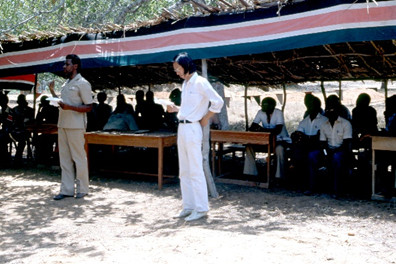
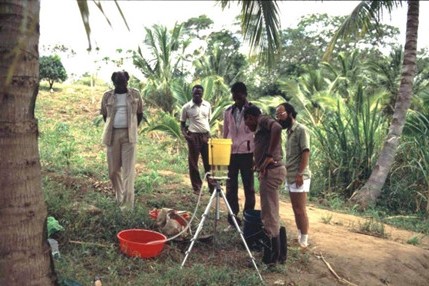
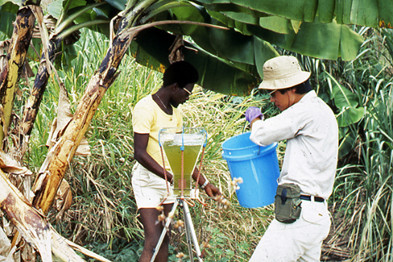
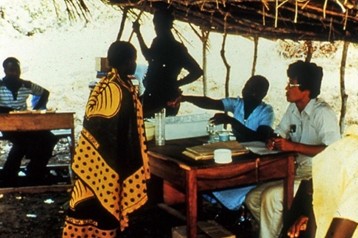
Establishment of the Nagasaki University Africa Research Station (in Kenya): Cooperation beyond the Field of Medical Care (2005-)
Nagasaki University earned a reputation for its many years of contributions in Kenya, and in 2005, the university established the Kenya Research Station inside the Kenya Medical Research Institute (KEMRI).
In addition to the Director of the Research Station, there are two researchers, four administrative staff, and 87 Kenyan staff and students working in the research building. Since the establishment of the Station, while focusing on conventional research on infectious diseases, researchers from the School of Dentistry at the Station have conducted research on oral health, the Faculty of Fisheries researchers have worked on freshwater fish farming and processed product development, and the School of Engineering researchers have undertaken water quality testing and lake water purification and cooperated with robot contests for the development of local robotics technology.
Nagasaki University has also expanded its activities in Africa outside of Kenya by developing a rapid diagnostic method for Ebola hemorrhagic fever (Guinea), building an early warning and monitoring system for infectious disease epidemics (South Africa, Egypt, Democratic Republic of Congo, and Nigeria), managing bridge infrastructure, and conducting research on African culture.
水産学部の淡水魚養殖や加工製品、工学部の水質検査と湖水浄化研究、

